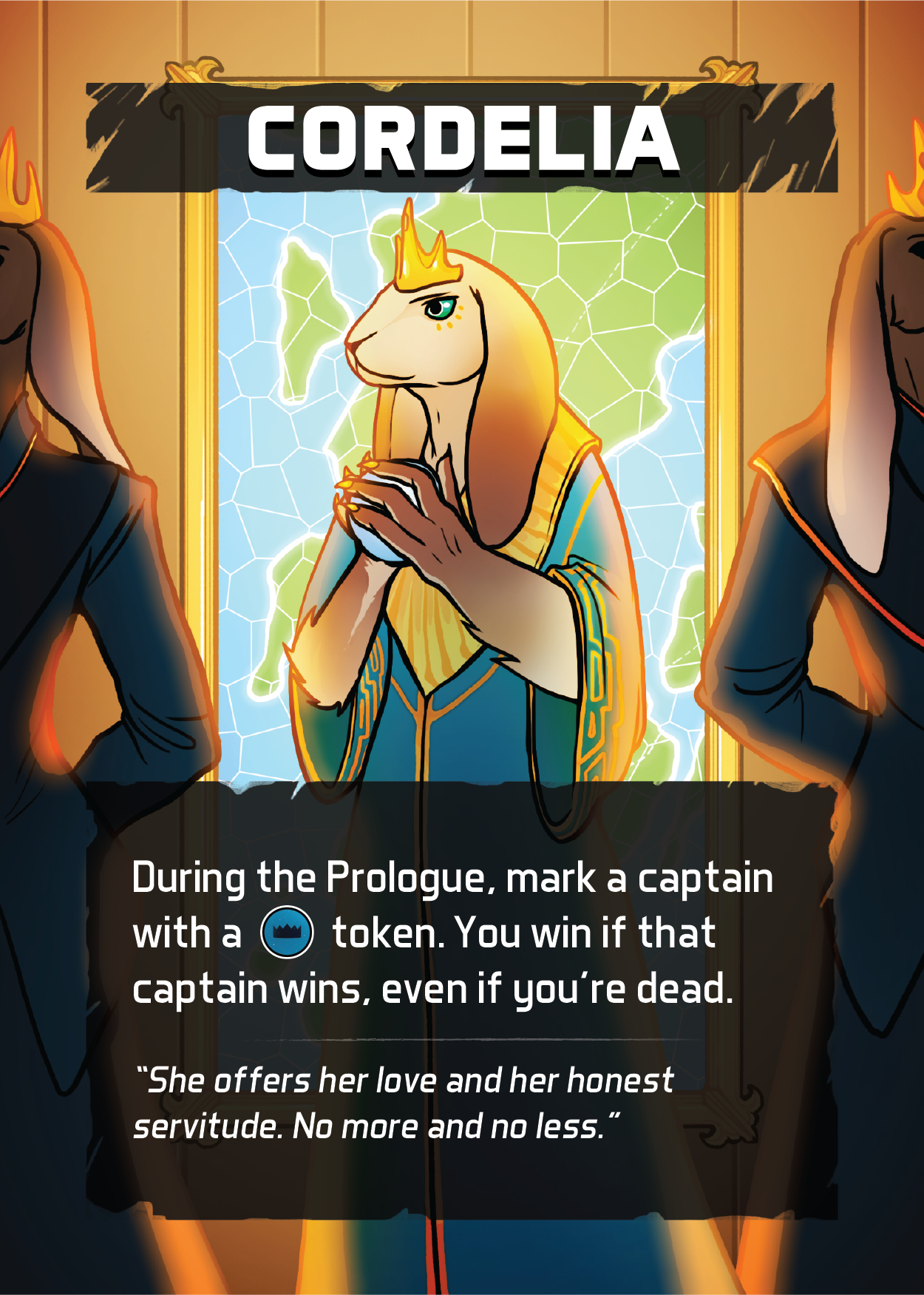There are two key things you need to do to win in a social deception game. The first, obviously, is accomplish your primary objective. This is usually fairly straightforward and varies depending on what game you are playing. In a game like Captain’s Gambit, your objective could be killing your opponents, gathering resources, or keeping your allies alive. However, the second thing you need to do is much trickier: you need to keep your primary goal hidden. If you don’t, the other players will know what they need to do to stop you. For example, in Among Us, half of the Imposters’ job is to make sure the Crewmates don’t find out who they are. It’s not enough to just murder everyone; they need to murder everyone secretly.
This second goal is the same regardless of what social deception game you’re playing. This means if you want to make your own social deception game, you’re going to need to design ways that players can keep their true intentions undetected. So how can you help your players stay hidden? Today, I’m going to share a sneaky design trick we used in Captain’s Gambit to empower our players to hide in plain sight.
We first stumbled upon this approach while designing Cordelia & Brutus. When Cordelia was initially put into the game, she dramatically increased the win rate of whoever she marked. This was because whoever got marked knew for a fact someone had their back. As a result, players who got marked could just recklessly pursue their primary objective with no need for subtlety.
To balance them out, we added Brutus to the game. Because Brutus marks a player using an identical token to Cordelia, this resulted in two main effects:
Brutus can pretend to be Cordelia: By having a passive captain that shares their same general play pattern, Brutus has someone they can easily pretend to be to diffuse suspicion (e.g. “Oh, I’m not Brutus. I’m Cordelia.”).
Cordelia needs to prove they aren’t Brutus: Now if Cordelia wants to overtly help someone, they have to convince them it isn’t secretly a ruse (e.g. “I swear I’m Cordelia! You can trust me!”),
The key insight here is that having multiple captains with wildly different objectives that all share the same “tells” makes it easier for everyone to keep their goals secret. Not only does it provide an “innocent” out, but it also forces the other players to always ask “but what if they’re actually a threat?”. This doubt is key for ensuring that no one is ever 100% certain who anyone else is.
So how did we capitalize on this insight? We did it by designing multiple captains around the same core mechanics with wildly different win conditions. As an example, let’s look at the captains in the game that tend to hoard Blood and Energy.
Blood
Iago (Manipulation)
Lady Macbeth (Ascension)
Titus (Domination)
In both cases, there is a Manipulator, an Ascender, and a Dominator all tied to the same mechanic. This means that captains like Titus can easily hide themselves by pretending to be Iago, while Puck needs to constantly assure everyone that they aren’t secretly Richard. This provides plenty of support for players to keep their identities obscured (and that’s before factoring in other captains like Rosalind or Viola).
While this approach is far from the only way to design uncertainty in a social deception game, we’ve found that this method is both effective and satisfying. By having multiple captains all share the same “tells”, players can show off both their deception and their deduction skills as they try to answer the key question: “But what if they’re…?”.





